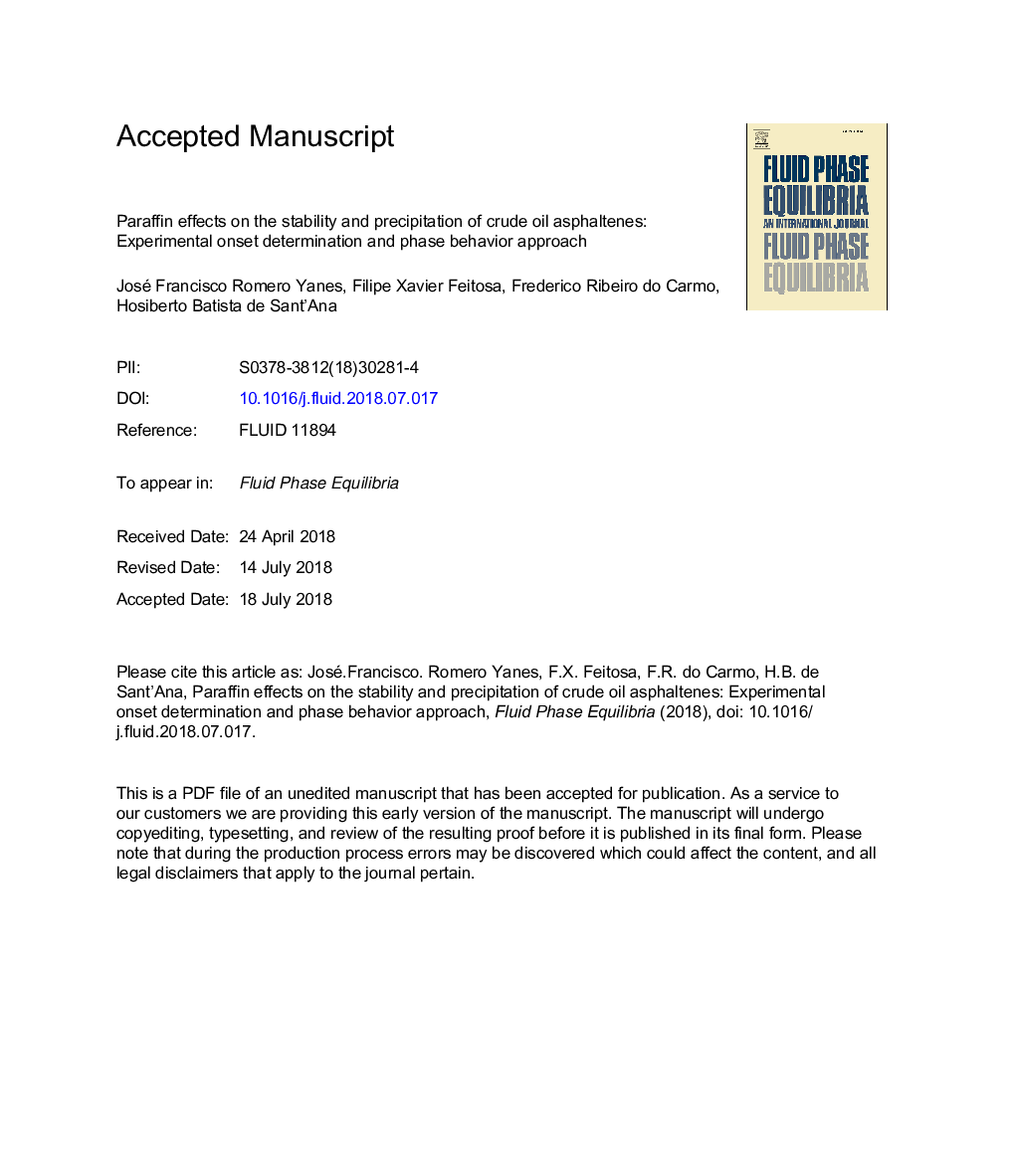| Article ID | Journal | Published Year | Pages | File Type |
|---|---|---|---|---|
| 6619058 | Fluid Phase Equilibria | 2018 | 32 Pages |
Abstract
Asphaltene precipitation has been related with flow assurance problems in all the stages of crude oil production and processing. The destabilization of asphaltenes in crudes depends on temperature, pressure and composition variations. The latter variable was specifically studied in this work throughout compositional modifications of Brazilian dead oils, by adding three different paraffins on the crudes (n-hexadecane, docosane and a commercial paraffinic pool). These paraffins were firstly added in a crude oil, here named P1 (16.5 °API, 6.34â¯wt % asphaltenes), and the resulting modified crudes were analyzed in terms of asphaltene yield and stability using n-heptane as precipitant. Asphaltenes precipitation onset was affected by the inclusion of all the paraffins tested in the same extension; at the maximum paraffin addition of 10â¯wt%, onset decreases by 5â¯Â±â¯1 n-heptane wt %. Similar results were verified for other two different oils P2 (17.7 °API, 6.29â¯wt% asphaltenes) and P3 (16.7 °API, 1.55â¯wt% asphaltenes). The solids obtained from the different systems were analyzed by FT-IR spectroscopy, observing that the alkyl content of the asphaltenes was not affected by the inclusion of heavy paraffins. Precipitation behavior was evaluated by using literature reported thermodynamic models based on modifications of the Regular Solution Theory. This model reproduced qualitatively the experimental precipitation behavior and the asphaltene solvency affectation by paraffin addition in the crudes.
Related Topics
Physical Sciences and Engineering
Chemical Engineering
Chemical Engineering (General)
Authors
José Francisco Romero Yanes, Filipe Xavier Feitosa, Frederico Ribeiro do Carmo, Hosiberto Batista de Sant'Ana,
